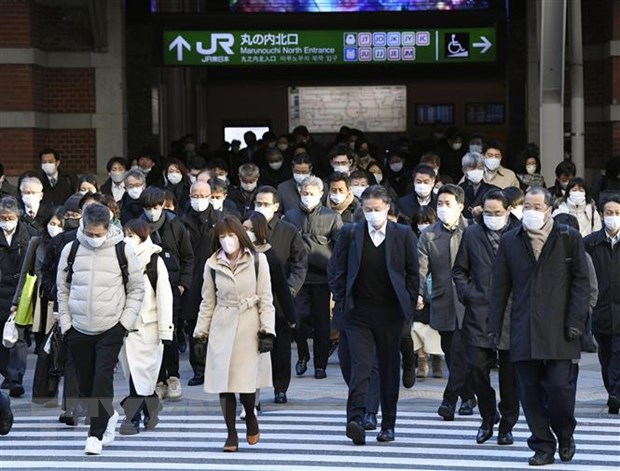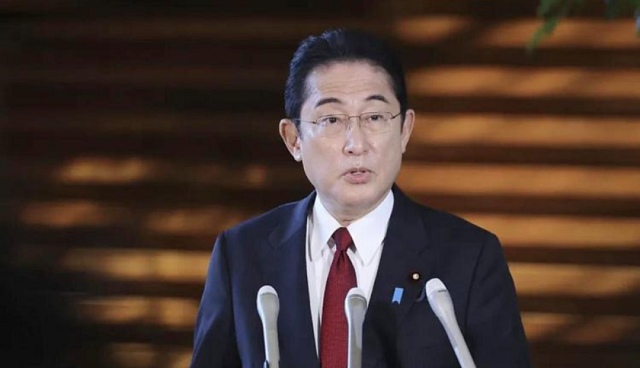Why hasn’t Japan declared the end of the COVID-19 epidemic till now?
- Normal Liver Cells Found to Promote Cancer Metastasis to the Liver
- Nearly 80% Complete Remission: Breakthrough in ADC Anti-Tumor Treatment
- Vaccination Against Common Diseases May Prevent Dementia!
- New Alzheimer’s Disease (AD) Diagnosis and Staging Criteria
- Breakthrough in Alzheimer’s Disease: New Nasal Spray Halts Cognitive Decline by Targeting Toxic Protein
- Can the Tap Water at the Paris Olympics be Drunk Directly?
Why hasn’t Japan declared the end of the COVID-19 epidemic till now?
- Should China be held legally responsible for the US’s $18 trillion COVID losses?
- CT Radiation Exposure Linked to Blood Cancer in Children and Adolescents
- FDA has mandated a top-level black box warning for all marketed CAR-T therapies
- Can people with high blood pressure eat peanuts?
- What is the difference between dopamine and dobutamine?
- How long can the patient live after heart stent surgery?
Why hasn’t Japan declared the end of the COVID-19 epidemic till now?
The COVID-19 virus epidemic that has been tossing for more than 3 years is finally coming to an end.
The latest statistics on the 24th show that the number of newly diagnosed infections in Japan has dropped to 15,000 a day , and the number of confirmed infections in Tokyo has dropped to less than 1,000 a day .
So, when will Japan officially announce the end of the epidemic?
The Japanese government has not made a clear statement on anything, but the cabinet meeting has decided to announce that the new coronavirus will be reduced from category 2 to category 5 on May 8 this year, which is the first week after the end of the ” May 1st Golden Week”. Class, and renamed “coronavirus 2019 “, no longer called “new coronavirus” (Japanese name “コロナ”) .
This downgrade and name change should be a sign that the Japanese government declared the end of the COVID-19 virus epidemic in disguise.

When the epidemic was severe, Prime Minister Abe did not dare to shake hands when he met the Speaker of the House of Representatives.
On January 15 , 2020 , Japan confirmed its first case of infection in an immigrant from China. Since then, mutated viruses from Europe and the United States have also been frequently introduced into Japan .
So far, during the more than three years of the epidemic in Japan , a total of 33.16 million people have been diagnosed with infection and 72,051 people have died ( as of February 23 ). The vast majority of the infected and dead are due to the Omecolon virus.
Therefore, in the past year, Japan was the most injured!
There are still more than 2 months before the end of the epidemic is announced.
The Japanese government has allowed the people to adapt slowly, and the medical relief system for the COVID-19 virus has gradually weakened. I hope that time will allow everyone to have a peaceful transition .
However, during this transitional period, I encountered another practical problem: when to take off the mask?
Because after the outbreak of the epidemic, the Japanese government called on citizens to wear masks when going out to prevent cross-infection.
According to this requirement of the government, whether you are flying, taking the Shinkansen, subway, or entering restaurants and shopping malls, measuring temperature and wearing a mask has become a “national obligation”.
In 2021 , a university teacher took a passenger plane from Hokkaido without wearing a mask and quarreled with the flight attendants. As a result, the plane was forced to land midway. The teacher was arrested for “obstructing business”.
Although this obligation is not mandatory, if you look around, you will feel “ashamed” if you are not wearing a mask. This kind of inexplicable panic, the reporter experienced it during an off-duty time last week.
Because people forgot to wear a mask when the reporter left the office, and when people got on the subway, the whole car was completely white, and I was the only one with no barriers.
The reporter seem to feel that everyone’s eyes are on me, and I seem to feel that I have become an “enemy of the people”.
However, the epidemic has subsided, do we still need to continue to wear masks? People across the country are awaiting instructions from the prime minister’s residence.

On February 24 , Japanese Prime Minister Fumio Kishida held a press conference at the Prime Minister’s residence, announcing March 13 as the lifting day of the “mask order”.
He said, should we continue to wear masks after March 13 ? Basically, it is up to individuals to decide, instead of uniform rules formulated by government departments, the government respects the right of individuals to make their own choices .
“Basically, hopefully, people will spend more time without masks , except when they are encouraged to wear them,” he said .
Prime Minister Kishida’s words are very ambiguous, that is, “personal decision”, that is, “self-responsibility”.
Because according to the rules of the game in Japanese society, the government asks the citizens to do something, then all expenses and burdens must be borne by the government.
For example, when the state of emergency was implemented, the government required restaurants to close at 8:00 p.m., and the restaurants said: “No problem, we will actively cooperate. However, the government will subsidize the economic losses caused by my early closing.” Therefore, the Japanese government Just obediently receive daily allowances.
Similarly, the COVID-19 virus is designated as a ” Type 2 infectious disease” by the government, which restricts people’s movements.
Well, ordinary people cannot make money and live because they cannot go to work. Your government has to make up for this part of the loss. At the same time, I was infected, and you have to pay for the medical expenses.
However, once the government says that the epidemic is over and the COVID-19 virus has become a flu-level, then, in case there is still an infection, the medical expenses will be divided according to the regulations of the medical insurance system at 3:7 – 30 % for the individual .
Therefore, in order to avoid stimulating the public’s emotions, the Kishida government has unloaded the burden step by step for a long time in stages, first lifted the ban on the whole society, then abolished the mask order, and then announced that it will be reduced to “flu level”, and then set it for 3 months The extended period of free treatment, and finally “painless therapy” allowed this once-in-a-century epidemic to land safely.
This process looks very mother-in-law, but it can gradually quiet down the whole society, and finally draw a full stop.
Reference:
https://www.topics.or.jp/articles/-/823461
Why hasn’t Japan declared the end of the COVID-19 epidemic till now?
(source:internet, reference only)
Disclaimer of medicaltrend.org
Important Note: The information provided is for informational purposes only and should not be considered as medical advice.



